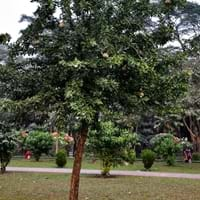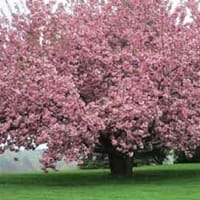Life Span
Perennial
Annual and Perennial
Type
Fruits, Trees
Flowering Plants, Fruit, Tree
Origin
Bangladesh, India, Pakistan, Sri Lanka, Tropical Indomalaya
Hybrid origin
Types
Not Available
Not Available
Habitat
Dry areas
Bushlands, gardens, Homesteads, In desert grasslands, Lowland, Shady Edge, Tropical areas
USDA Hardiness Zone
Not Available
5-8
AHS Heat Zone
Not Available
Not Available
Sunset Zone
Not Available
Not Available
Habit
Not Available
Oval or Rounded
Flower Color
White
White, Pink
Flower Color Modifier
Not Available
Bicolor
Fruit Color
Greyish Brown, Light Green, Not Available
Not Available
Leaf Color in Spring
Green
Green
Leaf Color in Summer
Dark Green
Dark Green
Leaf Color in Fall
Green
Not Available
Leaf Color in Winter
Gray Green
Not Available
Plant Season
Autumn
Spring, Fall
Sunlight
Full Sun, Partial Sun
Not Available
Type of Soil
Rich
Clay, Loam
The pH of Soil
Acidic, Neutral
Acidic, Neutral, Alkaline
Soil Drainage
Well drained
Average
Bloom Time
Late Fall
Summer, Late Summer, Early Fall
Tolerances
Drought
Not Available
Where to Plant?
Ground, Pot
Ground
How to Plant?
Budding, Layering, root cutting, Seedlings
Seedlings, Stem Cutting
Plant Maintenance
Low
Medium
Watering Requirements
Do not water excessively
Keep the ground moist but not water-logged, Requires watering in the growing season
In Summer
Lots of watering
Lots of watering
In Spring
Moderate
Moderate
In Winter
Average Water
Average Water
Soil pH
Acidic, Neutral
Acidic, Neutral, Alkaline
Soil Type
Rich
Clay, Loam
Soil Drainage Capacity
Well drained
Average
Sun Exposure
Full Sun, Partial Sun
Full Sun, Partial Sun
Pruning
Prune after harvesting, Remove dead or diseased plant parts
Prune prior to new growth, Remove deadheads, Shape and thin as needed
Fertilizers
for fruiting plants, use high phosphorous content fertilizer
Organic Manure
Pests and Diseases
Not Available
Aphids, Mealy bugs, Mites
Plant Tolerance
Drought
Not Available
Flower Petal Number
Single
Semi-Double
Foliage Texture
Medium
Medium
Foliage Sheen
Matte
Matte
Attracts
Not Available
Not Available
Allergy
Gastric
no allergic reactions
Aesthetic Uses
Not Used For Aesthetic Purpose
Ornamental use, Showy Purposes
Beauty Benefits
Good Cleanser
Not Available
Environmental Uses
Not Available
Air purification
Medicinal Uses
Blood cleanser, Diabetes, Ear ache, Energy, Kidney problems, Liver Protection, Malaria, Respiratory Disorders, scurvy, Snakebite
No Medicinal Use
Part of Plant Used
Fruits
Flowers, Fruits
Other Uses
Used As Food, Used for its medicinal properties
Culinary use, Showy Purposes, Used as Ornamental plant
Used As Indoor Plant
No
No
Used As Outdoor Plant
Yes
Yes
Garden Design
Edible, Fruit Tree
Feature Plant, Shade Trees, Street Trees
Botanical Name
Limonia acidissima
PRUNUS 'Hally Jolivette'
Common Name
Wood apple, monkey fruit, curd fruit
Flowering Cherry, Hally Jolivette Flowering Cherry
In German
Indischer Holzapfel
Blühende Kirsch
In French
Kawista
cerisier
In Spanish
Kawista
floración de la cereza
In Greek
γλυκό ασβέστη
Άνθιση κερασιών
In Portuguese
Limonia
cereja de florescência
In Polish
Feronia słoniowa
Kwitnienie wiśni
In Latin
dulcis ad cinerem
florentem cerasis
Phylum
Magnoliophyta
Tracheophyta
Class
Magnoliopsida
Magnoliopsida
Clade
Angiosperms, Eudicots
Angiosperms, Eudicots, Rosids
Tribe
Citreae
Not Available
Subfamily
Aurantioideae
Amygdaloideae
Properties of Wood Apple and Flowering Cherry
Wondering what are the properties of Wood Apple and Flowering Cherry? We provide you with everything About Wood Apple and Flowering Cherry. Wood Apple doesn't have thorns and Flowering Cherry doesn't have thorns. Also Wood Apple does not have fragrant flowers. Wood Apple has allergic reactions like Gastric and Flowering Cherry has allergic reactions like Gastric. Compare all the properties and characteristics of these two plants. Find out which of these plant can be used as indoor plant. If you are interested to decorate your house and garden, find out aesthetic uses, compare them and select the plant which will beautify your surrounding. Along with beautification, try comparing medicinal and edible uses of Wood Apple and Flowering Cherry and you can choose the plant having best and most benefits.
Season and Care of Wood Apple and Flowering Cherry
Season and care of Wood Apple and Flowering Cherry is important to know. While considering everything about Wood Apple and Flowering Cherry Care, growing season is an essential factor. Wood Apple season is Autumn and Flowering Cherry season is Autumn. The type of soil for Wood Apple is Rich and for Flowering Cherry is Clay, Loam while the PH of soil for Wood Apple is Acidic, Neutral and for Flowering Cherry is Acidic, Neutral, Alkaline.
Wood Apple and Flowering Cherry Physical Information
Wood Apple and Flowering Cherry physical information is very important for comparison. Wood Apple height is 800.00 cm and width 900.00 cm whereas Flowering Cherry height is 180.00 cm and width 240.00 cm. The color specification of Wood Apple and Flowering Cherry are as follows:
Wood Apple flower color: White
Wood Apple leaf color: Green
Flowering Cherry flower color: White and Pink
- Flowering Cherry leaf color: Green
Care of Wood Apple and Flowering Cherry
Care of Wood Apple and Flowering Cherry include pruning, fertilizers, watering etc. Wood Apple pruning is done Prune after harvesting and Remove dead or diseased plant parts and Flowering Cherry pruning is done Prune prior to new growth, Remove deadheads and Shape and thin as needed. In summer Wood Apple needs Lots of watering and in winter, it needs Average Water. Whereas, in summer Flowering Cherry needs Lots of watering and in winter, it needs Average Water.





